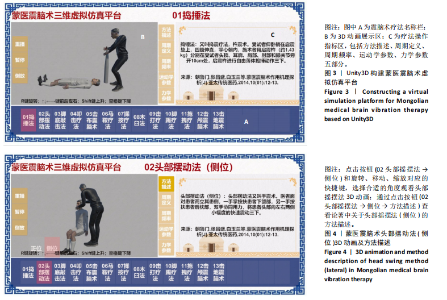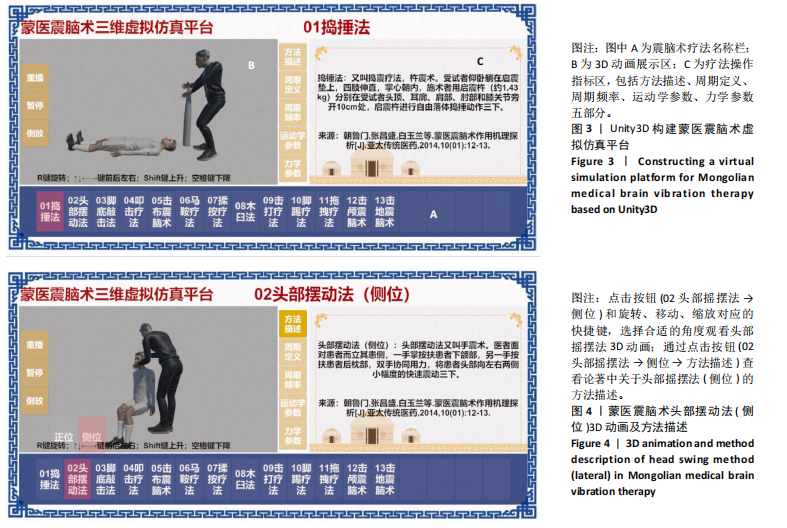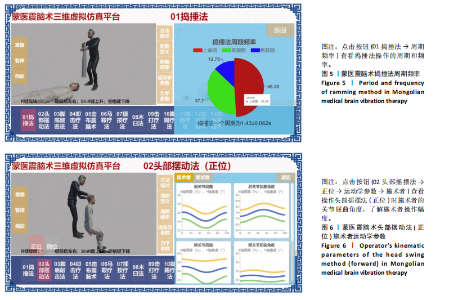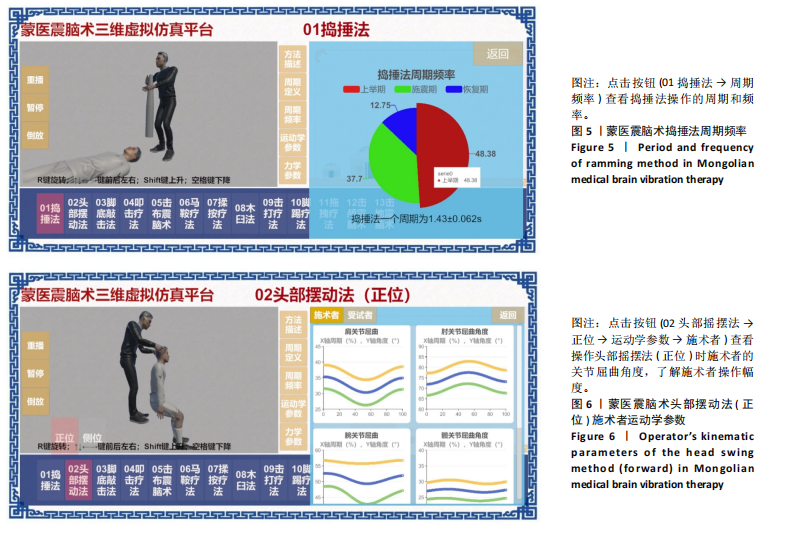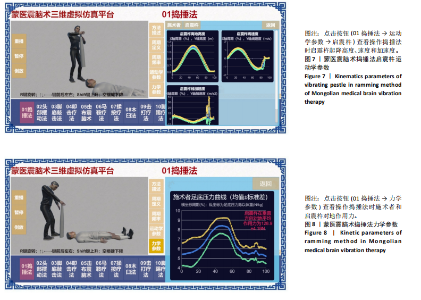[1] 张盛宇,李豪喆,陈琛,等.脑震荡后综合征伤残重新鉴定分析[J].法医学杂志,2021,37(5):661-665.
[2] 杨以平,曹冠柏,黎勇夫,等.脑震荡诊断研究新进展[J].检验医学与临床,2020,17(9):1301-1304.
[3] 朝鲁门,阿古拉,霍布仁巴雅尔.蒙医治疗脑震荡的临床疗效评价研究[J].世界科学技术(中医药现代化),2011,13(2):379-383.
[4] 依喜巴拉珠尔.四部甘露[M].呼和浩特:内蒙古人民出版社, 1998:345-396.
[5] 吉格木德丹金札木苏.通瓦嘎吉德[M].呼和浩特:内蒙古人民出版社,1999:104.
[6] 博·阿古拉.蒙医传统疗法[M].呼和浩特:内蒙古科技出版社, 1990:80-88.
[7] 陈路遥,佟海英,朝鲁门.蒙医震脑术治疗脑震荡的临床和机制文献研究[J].中华中医药杂志,2021,36(12):7432-7435.
[8] 朱坚轶,吴峥,张旻,等.医学虚拟仿真实验课程的建设现状与实践[J].中国医药导报,2023,20(9):186-189.
[9] 刘宇航,孙瑞芬,木日根吉雅,等.三维数字儿童蒙医针刺穴位可视化系统的研发[J].中国组织工程研究,2024,28(20):3223-3228.
[10] 姬宇程,李忠贤,翁羽洁,等.基于虚拟现实技术构建蒙医针刺手法的上肢仿真系统[J].中国组织工程研究,2020,24(11):1745-1749.
[11] 李建国,高春雨,高景华,等.基于运动捕捉系统构建摇拔戳手法治疗踝关节扭伤动画仿真模型的研究[J].中国数字医学,2021, 16(8):93-97.
[12] VICON®. Plug-in-Gait modelling instructions. Vicon® Manual, Vicon®612 Motion Systems. Oxford, UK: Oxford Metrics Ltd., 2002.
[13] 黄雅露.体育动作技术虚拟仿真教学平台的设计与研究[D].武汉:武汉体育学院,2021.
[14] 朝鲁门.蒙医震脑术及启震原理研究[D].北京:北京中医药大学, 2011.
[15] 包凤兰,包照日格图,周相均.奇妙的蒙医治疗脑震荡传统疗术[J].云南中医学院学报,2006(S1):100-101.
[16] KONG YK, CHOI KH, CHO MU, et al. Ergonomic Assessment of a Lower-Limb Exoskeleton through Electromyography and Anybody Modeling System. Int J Environ Res Public Health. 2022;19(13):8088.
[17] SYLVESTER AD, LAUTZENHEISER SG, KRAMER PA. A review of musculoskeletal modelling of human locomotion. Interface Focus. 2021;11(5):20200060.
[18] 张昌盛.蒙医震脑术治疗偏头痛的临床研究[D].北京:北京中医药大学,2015.
[19] 萨日娜.蒙医震脑术治疗PC-BPPV患者临床疗效评价研究[D].通辽:内蒙古民族大学,2023.
[20] 张昌盛,阿古拉,朝鲁门,等.蒙医震脑术治疗偏头痛的疗效及对血浆一氧化氮和内皮素的影响[J].中国中医急症,2015,24(1):7-9+12.
[21] YU H, CHAO L, WANG Z, et al. Effect of Mongolian medical brain vibration therapy on inflammation and neuroprotection in rats with concussion. Int J Clin Exp Med. 2021;14(12):2599-2607.
[22] 管练武,丛晓丹,张庆,等.基于微惯性与Unity3D的室内滑雪教学与训练可视化系统设计[J].实验技术与管理,2021,38(10):152-156.
[23] 关宏刚,黄若景,刘礼初,等.岭南正骨手法三维运动追踪虚拟仿真模型的研究[J].中医药导报,2017,23(14):15-18.
[24] 叶思航.基于三维动作捕捉的下肢骨折术后步态分析[D].上海:上海交通大学,2020.
[25] 照那木拉.蒙医震脑术的以震治震治疗理念与生物力学原理[J]. 中医正骨,2003,15(12):55-56.
[26] 唐广君,王宝剑,李建国,等.摇拔戳手法治疗急性外侧踝关节扭伤的运动学量化研究[J].医用生物力学,2022,37(1):143-147+154.
[27] 唐祖南,胡耒豪,陈震,等.增强现实技术在口腔颌面颈部解剖识别中的应用评价[J].北京大学学报(医学版),2024,56(3):541-545.
[28] 徐雪彬,王星,李琨,等.中国学龄前男童连续薄层标本数据集建立及可视化[J].解剖学报,2020,51(6):924-928.
[29] 季达峰,吴辉群,吕广明.基于局部欧拉角的下肢关节运动仿真模拟[J].解剖学报,2021,52(6):972-978.
[30] 李凌,张婷婷,谢珂.基于Unity3D的脑电图检测与分析虚拟仿真实验项目的设计和开发[J].中国医学物理学杂志,2021,38(5):631-637. |
